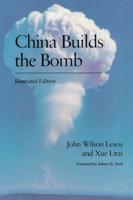Publisher's Synopsis
Army Techniques Publication ATP 4-35 Munitions Operations and Distribution Techniques provides munitions procedures and the mission and organization of ordnance units conducting munitions operations. The principal audience for ATP 4-35 is all members of the profession of arms. Commanders and staffs of Army headquarters serving as a joint task force or a multinational headquarters should also refer to applicable joint or multinational doctrine concerning the range of military operations as well as joint or multinational forces. Trainers and educators throughout the Army will also use this publication. Munitions operations ensure the lethality of the Army throughout unified land operations. This ATP focuses on all phases of munitions operations and distribution from theater opening through theater closing. Munitions distribution is the operational process of synchronizing all elements and echelons of the munitions complex to deliver the right munitions to the right place at the right time. Munitions operations and munitions distribution are essential components of unified land operations (Army Doctrine Publication [ADP] 3-0). ATP 4-35 contains five chapters covering a munitions operations overview, the munitions support system, planning for munitions operations, munitions distribution, and safety, environmental stewardship and protection in munitions operations. Chapter 1 describes the nature of munitions operations as a critical task of the sustainment warfighting function and as the determining factor in successful unified land operations. Next, this chapter describes munitions operations and the Army modular force. The chapter concludes with a discussion of the class V supply process. Chapter 2 describes the munitions support system as a complex of interconnected agencies, stakeholders, process owners and users. Roles and responsibilities of strategic, operational and tactical level organizations involved in the munitions complex are defined. Chapter 3 encompasses munitions planning. Phases of munitions operations are presented along with their associated ammunition requirements and allocations. Ammunition planning factors and considerations in munitions planning are also described, as well as the forms of ammunition loads. Chapter 4 describes the distribution structure of the Army's munitions support system. Ammunition units to include the ordnance (ammunition) battalion/combat sustainment support battalion (CSSB) headquarters, modular ammunition ordnance company and ammunition sections of the brigade support battalion (BSB) distribution company are discussed. Ammunition support activities (ASA) including the ammunition supply point (ASP) and ammunition transfer holding point (ATHP) are discussed. Finally, distribution enablers including platforms, communications and information systems are presented. Chapter 5 surveys munitions operations considerations for safety, environmental stewardship and protection, primarily for the commander and staff. ATP 4-35 replaces FM 4-30.1. Key changes include the implementation of unified land operations including the incorporation of the complementary sustainment warfighting function, levels of munitions support operations and their responsibilities, phases of munitions planning and operations to include requirements determination and munitions consumption formulae, force structure revisions and their associated changes to the munitions support and distribution structure, and the portrayal of the munitions information system digital architecture.










